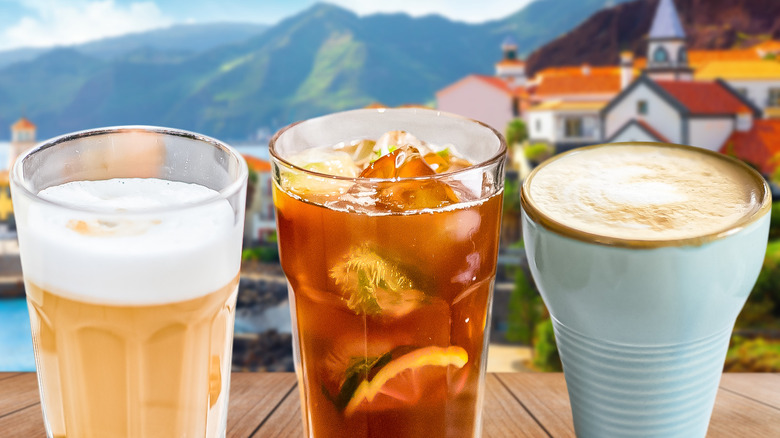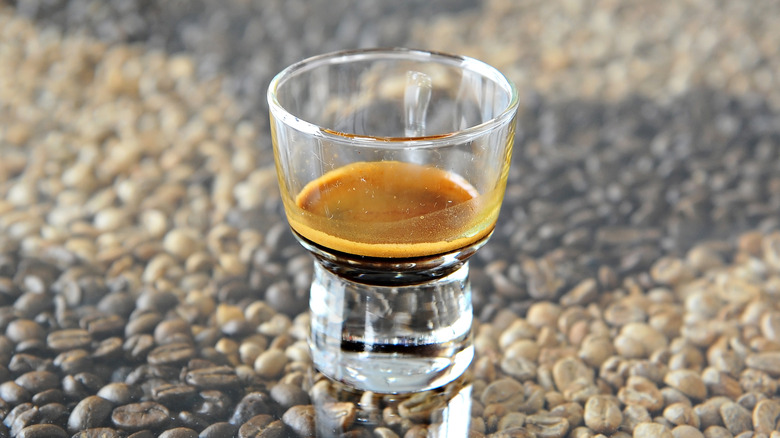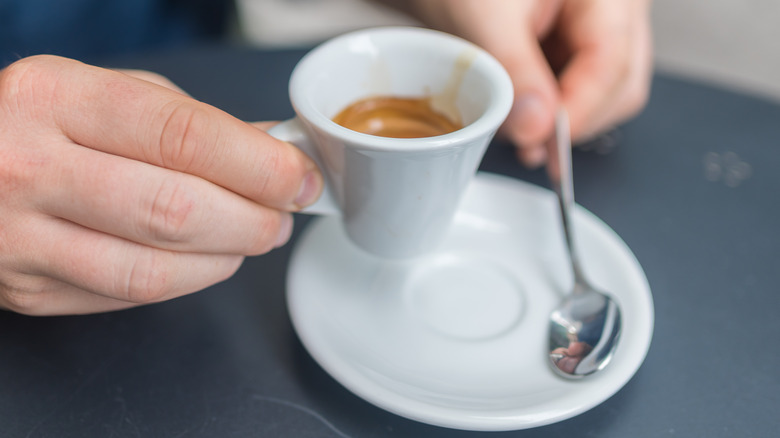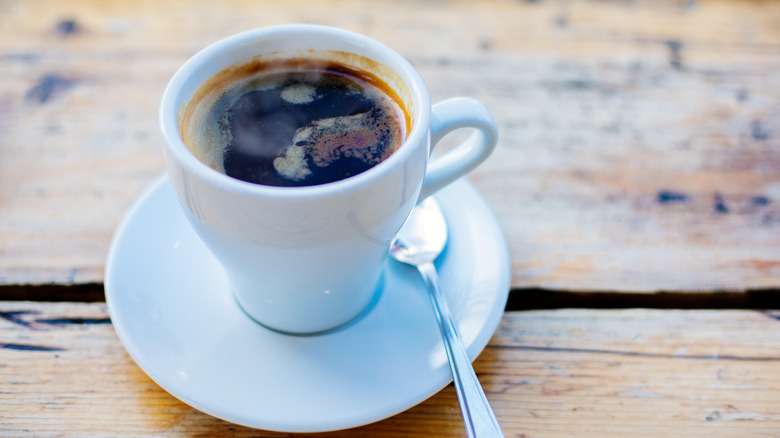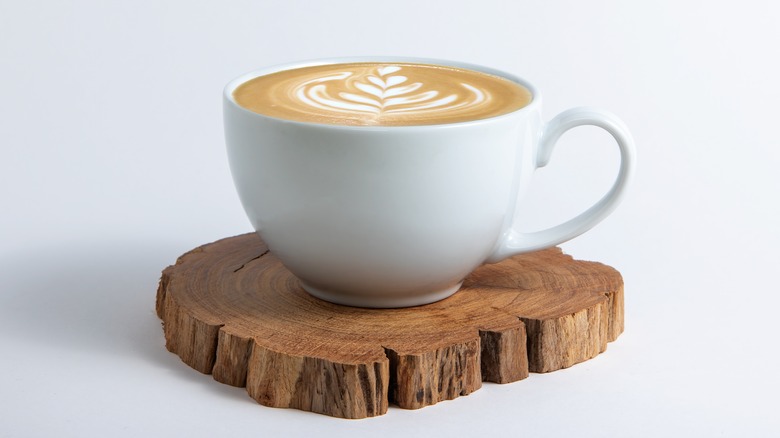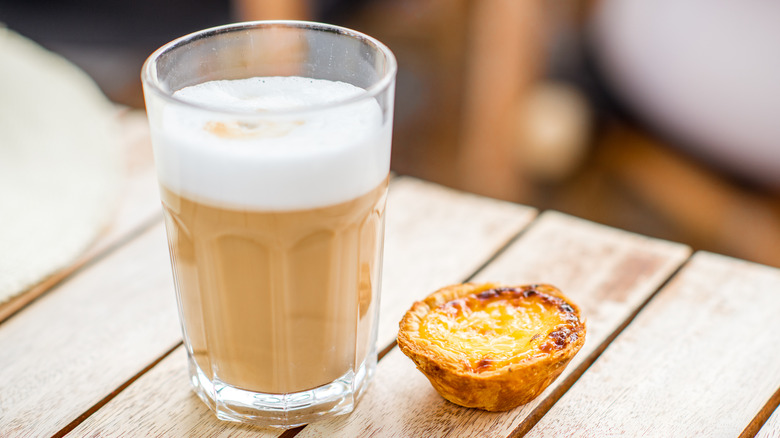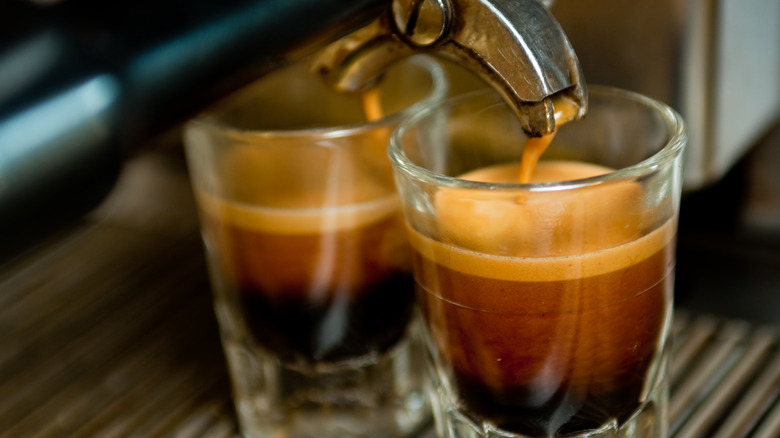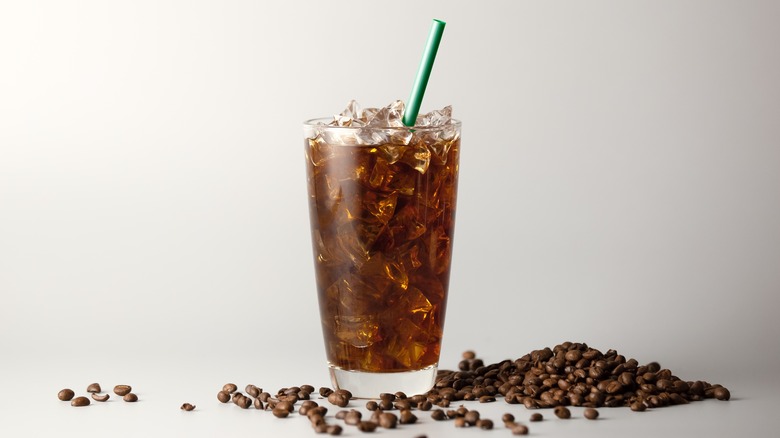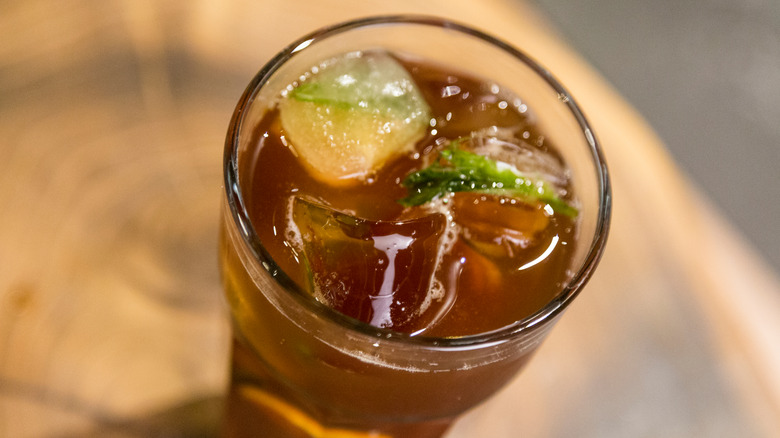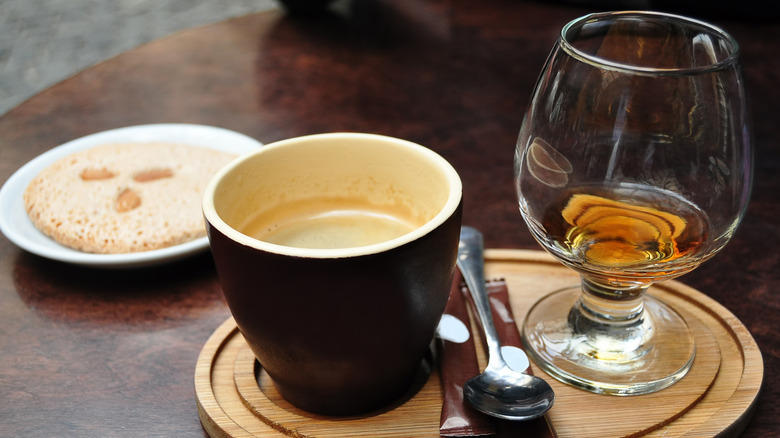12 Portuguese Coffee Drinks You Should Try At Least Once
When wandering the lively streets of Lisbon and savoring moments in the charming cafes of Porto, you can't help but notice that coffee is woven into the fabric of daily life in Portugal. Whether it's a morning conversation starter, a midday pick-me-up, or a leisurely afternoon indulgence, coffee is an ever-present companion in this Iberian nation. Despite its visibility in the local culture, the vibrant Portuguese coffee scene remains relatively undiscovered by the global coffee community. We think it's high time that changed.
From the straightforward allure of a café pingado to the comforting creaminess of the galão, Portugal's coffee culture caters to a diverse range of tastes and occasions. In this article, we embark on a journey through the lesser-known Portuguese coffee landscape, uncovering the stories and nuances behind each brew. Along the way, we'll delve into the heart of Portugal's coffee heritage and understand the essence of drinks like the garoto and the café mazagran. Join us as we explore the fascinating world of Portuguese coffee, one sip at a time.
Café
Ask for a coffee in Portugal and you're guaranteed to receive an espresso — just don't call it that. To be clear, Portuguese people won't call you out for using this term. They'll understand what you're trying to order, but you're unlikely to hear locals using the Italian word. Instead, they call it simply, um café. Bitter, short, and served black, this is the most popular coffee order in Portugal. You'll see people drinking it on their way to work in the morning, after eating a massive Francesinha sandwich at lunchtime, or during the afternoon break.
Café may look simple on the surface, but there are all kinds of variations. Normally, coffee is served in a ¾ full demitasse. If that's not enough liquid for you, request "um café cheio," which is "a full coffee," and you'll receive a coffee poured all the way to the rim. You can also request that your coffee come in a preheated cup, called "um café escaldado."
Besides these variations, the humble coffee also has a couple of nicknames to be aware of. For example, in Lisbon, you can ask for "uma bica," whereas in Porto, you would request "um cimbalinho." There are a lot of names to remember, so if you get confused, just order a café and you'll be on the right track.
Italiana
Although the Portuguese don't tend to use Italian words when describing coffee, some drinks, like the Italiana, do reference the Bel Paese. Also called "um café Italiano," or "an Italian coffee." An Italiana is a very short espresso, similar to an Italian ristretto. It's made using the same amount of coffee grounds as you'd use to make an espresso, but there are three noticeable differences.
For one, the grind is finer. Second, a ristretto uses half the amount of water as an espresso. To put it another way, a ristretto has a 1:1 coffee-to-water ratio, whereas an espresso has a 1:2 ratio. The result is a ½ ounce drink with about 55 milligrams of caffeine (compared to espresso's typical 65 milligrams). Finally, ristrettos brew twice as fast as espressos, resulting in a simpler flavor profile. Indeed, a ristretto tastes quite a bit different from an espresso. Compared to the acidic, sometimes bitter flavor you get in espresso, ristrettos tend to be full-bodied, sweet, and mellow.
Descafeinado
Whether it's late in the day or you tend to be a bit jittery by nature, do yourself a favor and order a descafeinado the next time you visit Portugal. As you can probably tell by the name, a descafeinado is a decaf coffee. Again, it's important to remember that coffee in this situation refers to a 1-ounce espresso, not the 8-ounce mug most Americans might be used to.
It's also worth noting that decaf coffee isn't completely free of caffeine. In general, you can expect to find up to 10 milligrams of caffeine in a decaf espresso. That may sound like a lot, but it's a far cry from the 60 to 65 milligrams you'll find in a single shot of espresso. In Portugal, you can drink a descafeinado straight up, or you can use it in place of regular espresso in pretty much any coffee beverage your heart desires.
Abatanado/Americano
Ever since American GIs came to Italy during World War II and found the coffee too strong, Europeans have been altering their coffee recipes to suit the milder preferences of North Americans. Italians can be credited as the originators of the term Americano, a word that describes the diluted espresso the soldiers developed a fondness for. However, you'll find similar words in French and Spanish coffee culture as well.
You're also likely to hear the term "um Americano" in Portugal, although it's more common in the north, near Porto. Near Lisbon, you'll probably hear "um abatanado" to describe this tall black coffee served in a mug. While you'll definitely get more coffee than you would if you were to order an espresso, you might still find this drink shorter than you're used to. If that's the case, try ordering a "um abatanado cheio," as in a "full abatanado." You'll get a coffee that's filled all of the way to the brim.
Café pingado
If the intense kick of unadulterated espresso is a bit too strong for your taste, and you're not in the mood for something elaborate, consider giving a café pingado a try. Pingado means "dripped" or "splashed" in Portuguese, and this name perfectly captures the essence of this coffee concoction. To prepare it, espresso is topped with a couple of drops of cold milk before serving. This not only brings the temperature down to an ideal sipping level but also imparts a touch of natural sweetness that takes the edge off the coffee's bitterness.
While the café pingado may appear similar to an Italian macchiato, there's a crucial difference in the type of milk used. In the case of a pingado, it's cold milk that's added to the espresso. In a macchiato, you'll find a hint of steamed milk on the espresso's surface. Unfortunately, Portugal doesn't have its own version of a macchiato, but you may be able to find a macchiato if you do your research.
Meia de leite
Literally translated, meia de leite means "half milk." As you can probably infer, the other half of the beverage is coffee. This balanced mix is typically served in a large cup that's perfect for lingering over. Paired with a Portuguese egg tart (aka a pastel de nata), it's a great way to start off the morning without overwhelming your system with caffeine. However, you do have the option of customizing your order if you prefer your coffee a bit stronger. In that case, simply request your drink "escura," which translates to "dark" and adjusts the ratio to favor more coffee over milk.
Although a meia de leite shares similarities with lattes or flat whites, these terms are mainly found in modern coffee shops in larger cities. Neighborhood pastry shops (called a pastelerías) still use the traditional name, so make sure you learn it if you're planning to get off the beaten path while in Portugal. It's worth mentioning that these pastry shops typically don't indulge in artistic latte designs, such as leaves or hearts. Instead, they focus on delivering a down-to-earth coffee experience without the frills.
Galão
The Galão stands as Portugal's counterpart to the latte, a comforting and creamy beverage typically presented in a tall glass mug. It's made with roughly ¼ espresso and ¾ steamed milk, although it may arrive with the coffee and milk components separated. If that's the case, some DIY mixing will allow you to customize the coffee-to-milk ratio to your liking. This delightful coffee is particularly favored during morning and late afternoon hours when it's enjoyed in the company of delectable pastries.
Before ordering a galão, there are a few noteworthy points to consider. Typically, it's crafted using leftover espresso grounds, a practice that's quite popular in Portugal for its cost-effectiveness and eco-friendliness, resulting in a milder coffee flavor suitable for those mindful of their caffeine intake. However, if you want a stronger coffee experience, order a "galão directo" and you'll get a full shot of espresso in your cup.
Besides choosing the type of coffee you want, you can also adjust your milk order according to your preferences. Those who want less milk can ask for a galão "escuro," a "dark" galão. On the other end of the spectrum, there's the galão clarinho, literally "clear galão," an even milkier take on this beloved drink.
Garoto
There's a big difference in the way American and European parents introduce their children to coffee. In general, American parents withhold this caffeinated elixir from their offspring as long as possible. As a result, many American kids end up trying coffee as teenagers when powering through their first all-nighter. The same can't be said for Portugal. There, coffee holds a revered place in the culture and necessitates a proper initiation. This is where the garoto steps in.
Translating to "little boy," the name befits this mild concoction, which is made with approximately 50% coffee and 50% hot or steamed milk. While it may appear straightforward, the preparation of a garoto sparks some debate. Some claim that it should be brewed using espresso, essentially resulting in a smaller version of a meia de leite. Others argue in favor of an Italiana method, which involves diluting the tiny measure of coffee with lots of milk. Regardless of the approach, the garoto serves as a gentle introduction to the intricate world of coffee.
Carioca
Leftover coffee grounds have all kinds of creative applications, whether you're utilizing them as a natural exfoliant or an effective odor neutralizer. However, while you might have ventured into the world of repurposing grounds within your home, here's a practice you've probably never considered: using them to brew a second batch of coffee. This unconventional approach may raise a few eyebrows, but it's commonplace in Portuguese cafes.
Known as a carioca, this espresso variation is crafted by passing already-used coffee grounds through the espresso machine once more. While some critics dismiss this drink, referring to it as dishwater, it has garnered a dedicated following among those looking to lower their caffeine intake. With that said, cariocas have a reputation for being quite sour, so you might want to order it with some milk and sugar.
We should also mention that not all cafes employ the reused grounds method when making cariocas. Some use a half measure of new espresso grounds, while others introduce a delay before placing the coffee cup under the machine. These variations lead to differing tastes, but the common denominator remains a milder coffee experience.
Café com gelo
Saying that it gets hot in Portugal is a bit like saying the ocean is wet. The scorching sun blankets the Iberian nation from May to September, creating an atmosphere that calls for some seriously refreshing drinks. Along with sangria and capilé, a cordial made from maidenhair leaves, orange blossom, and lemon zest, locals reach for café com gelo (aka Portugal's version of iced coffee) when the mercury rises.
The name might be familiar but don't expect the fanciful concoctions you encounter at international coffee chains like Starbucks or McDonald's. In other words, you won't find any syrups, whipped cream, or chocolate shavings here. Instead, Portugal takes a more straightforward approach. Typically, you'll receive a piping hot cup of espresso alongside a separate glass filled with ice. From there, it's up to you to blend the ingredients and wait for the drink to cool down.
While simple, café com gelo is a wonderfully effective solution to combat the sweltering Portuguese summer, providing both the caffeine kick you crave and the refreshing coolness essential to surviving the heat.
Café mazagran
If café com gelo embodies the dependable, practical father of the family, then café mazagran steps into the role of the whimsical, adventurous aunt. Both of these coffee drinks share a common starting point: espresso and ice. However, it's in the finishing touches that their personalities truly diverge. While café com gelo maintains a straightforward presentation, café mazagran takes a more eclectic approach, receiving a slice of lemon and a generous handful of mint leaves as garnishes. Beyond that, you might also see it served with sugar and a dose of alcohol such as rum or cachaca, a Brazilian white rum that's also used to make caipirinha cocktails.
The only downside to this tasty beverage is tracking one down. It's not a very common menu item and most establishments may not even have the know-how to whip one up, even with all of the ingredients on hand. Fortunately, it's pretty easy to make your own at home. All you have to do is cut lemon peel, place it in a glass, and add some ice cubes. From there, squeeze in some lemon juice, mix with the ice, add some sugar, and stir until dissolved. Finish with a healthy pour of cold coffee and a few mint leaves before serving.
Café com cheirinho
When translated, café com cheirinho means "coffee with a scent," hinting at the aromatic and invigorating drinking experience it offers. Similar to a Spanish Carajillo, this Portuguese specialty is a delightful fusion of robust espresso and a touch of alcohol. While café com cheirinho can be enjoyed with the spirit already mixed in, some prefer to have it served on the side, altering sips of each. However it's consumed, this combination is popular as a digestif and a winter warmer.
Reflecting the nation's regional diversity, this boozy coffee goes by different names depending on where you order it. In the north, it's known as bica com cheirinho, while those in Madeira and the Azores fondly refer to it as café com música, or "coffee with music." And the variations don't stop at names. The choice of spirit also varies, with many opting for brandy, pomace brandy (aguardente), or medronho, a fruit brandy derived from the medronho fruit.
Static Media owns and operates Tasting Table and Mashed.
